We don’t often go “twitching” – chasing after rare birds – but today there were reports of two good ones at Marshside RSPB – a Cattle Egret (which we’ve seen before) and a Glossy Ibis (which would be a “lifer” for me).
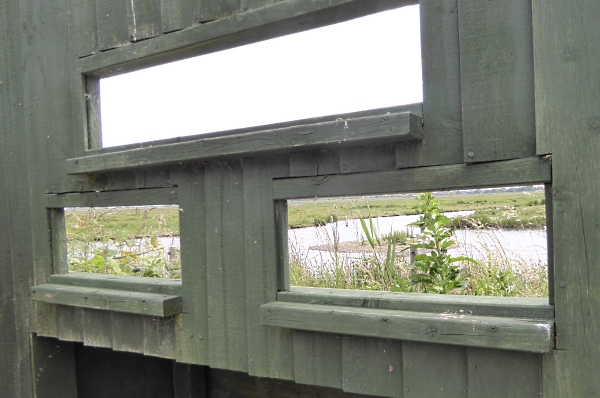
It was a lovely warm and sunny day, no coats, rolled up sleeves. In Preesall Close, where we got off the bus, there are House Martin nests every year in the eaves of the houses, and there were also Swallows swooping over the marsh. There was a profusion of wild flowers all along the verge of Marshside Rd and continuing on either side of the path down to Sandgrounder’s hide. The dominant plants were lots of a yellow crucifer, which might have been escaped Oil Seed Rape (Canola). In amongst it were Yarrow, White Campion, Poppies, Comfrey, Bindweed, Red and White Clover, Dog Rose and a white umbellifer that wasn’t Cow Parsley or Wild Carrot (white umbellifers aren’t my specialist subject!). Lower down were Hop Trefoil, the sand-dune specialists Rest-Harrow and Dewberry, and a tiny geranium-type flower that was either Small-flowered Cranesbill or Dovesfoot Cranesbill.
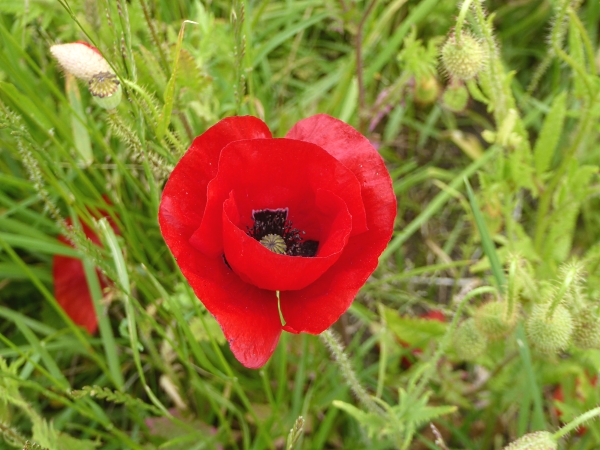
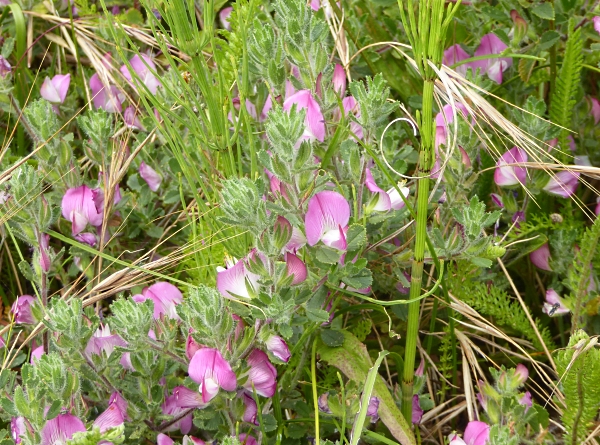
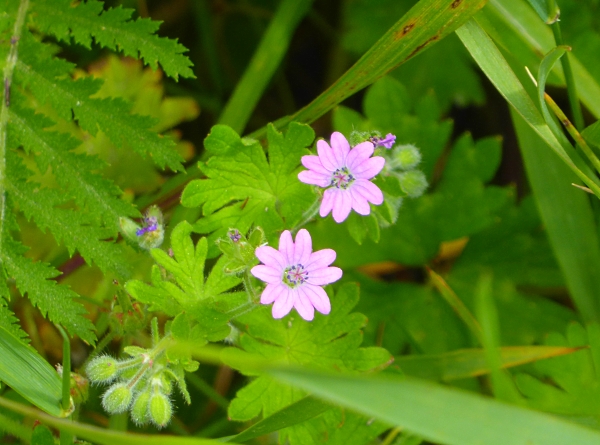
On the way to the hide we spotted a couple of Little Egrets, a hovering Kestrel, a flock of Black-tailed Godwits coming in to land, Lapwings, one or two Mute Swans and a couple of hundred Canada Geese, some with parties of goslings. From the hide we also noted Tufted Duck, Coots, Moorhens and Mallards. However the view of all the near islands was dominated by a nesting colony of Black-headed Gulls. They were squawking, squabbling and strutting, and seeing off rivals for their chosen patch of ground. There were many more than we have seen before, the colony is growing, and they seem to have displaced the Avocets that have nested here in the last few years.
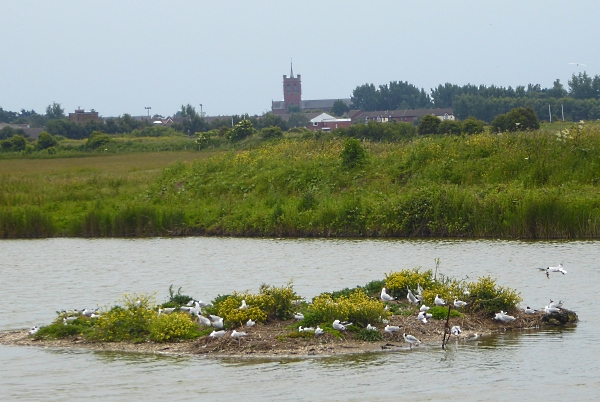
Some of the pairs of Black-headed Gulls had a couple of well-grown chicks with them, but surprisingly few of them. Had those parents been early nesters, or had all the others started at the same time but suffered some disaster (flooding? predation?) and were most of them starting on their second attempt? Suddenly there was mass panic, all the gulls flew up, and a Peregrine darted through the wheeling white wings. It didn’t seem to get any prey this time, though. Someone observed that they would all be safe from a falcon if they hunkered down, so why don’t they all stay put instead of flying up and becoming a Peregrine’s buffet? Their threat response, simply to fly in all frightening circumstances, seems a bit too generalised.
After lunch we headed south to Nel’s Hide, where we found a Swallow’s nest in the rafters. All the hide windows had been left open for the parents to fly in and out with food. We sat quietly at the far end and after a few minutes the feeding parents plucked up courage to start coming back in. There were four of five big chicks, almost ready to fledge.
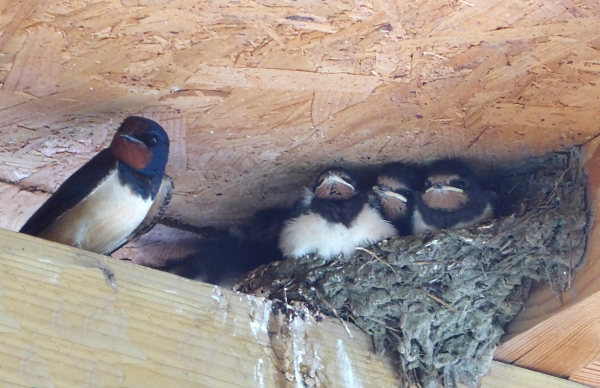
The Avocets displaced by the BHGs have decamped to Nel’s Pool.
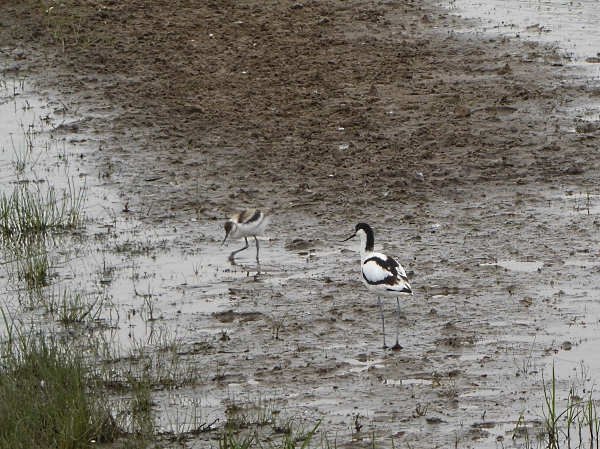
We watched the antics of three or four pairs with well-grown chicks. One pair were threatening a flotilla of about six Mallards and another was seeing off one of our target birds, the Cattle Egret.
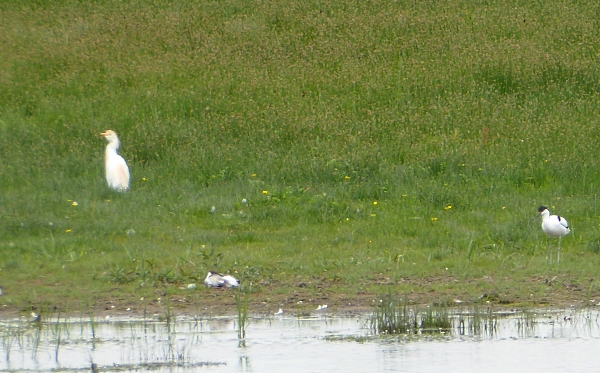
We had looked amongst the grazing cows earlier and not seen it, but here it was, sitting alone, nowhere near the cattle, which had moved on. I have never seen one NOT in amongst the legs of cows before. Nearby was a Little Egret, and to make the set, a Great Egret flew over, wheeled, but we didn’t see where it had landed.
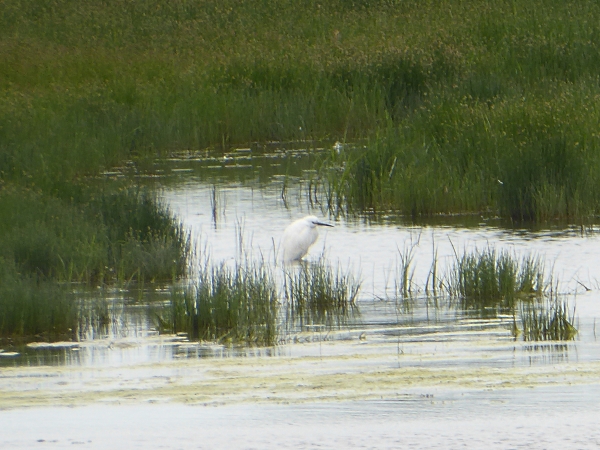
Sadly, no sign of the Glossy Ibis, which had been reported there all week, including early that same morning. So we headed back to the bus, but there were still some interesting sights to see in the hedgerows. The low vegetation held patches of little banded snails, the biggest about half an inch (1.3 cm) and some as small as ¼” or less (3mm). Were they something special? No, they seem to have been White-lipped Banded Snails, which are quite common.
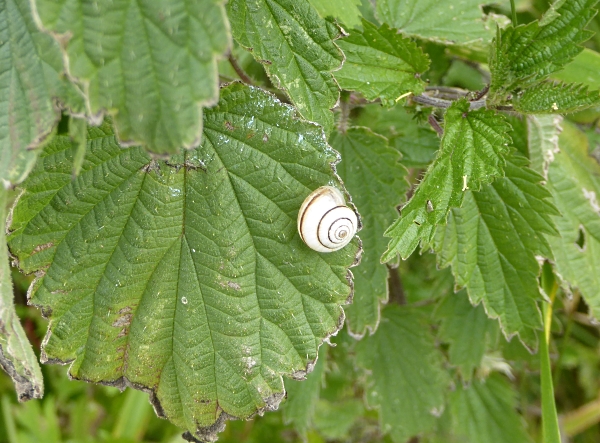
This little beastie appears to be a Common Froghopper, caught in the act of blowing “cuckoo spit”.
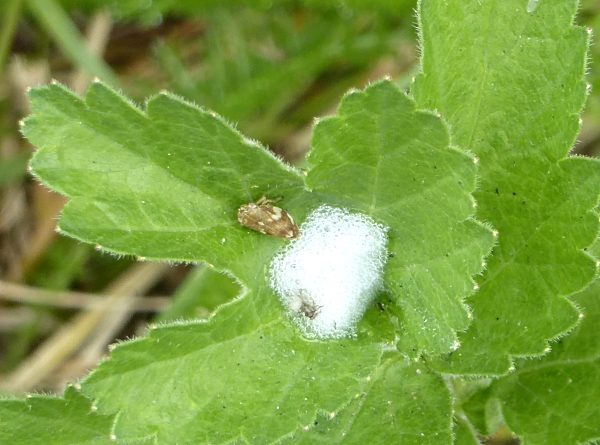
On the edge of the pavement in Marshside Road, amazingly, a Bee Orchid.
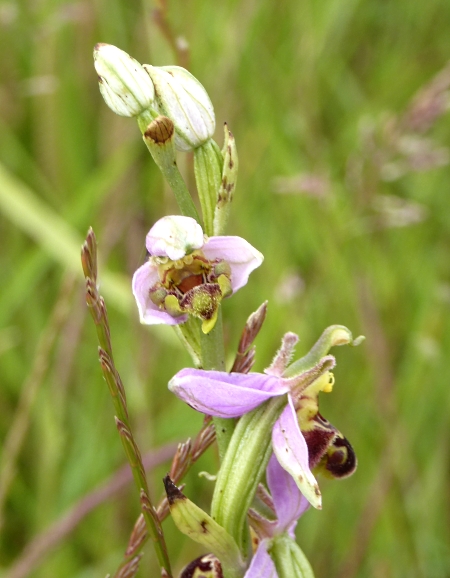
And lastly, the colony of House Sparrows in garden next to the Fernley Observatory and the returning bus stop, was showing off several fluffy fledglings.
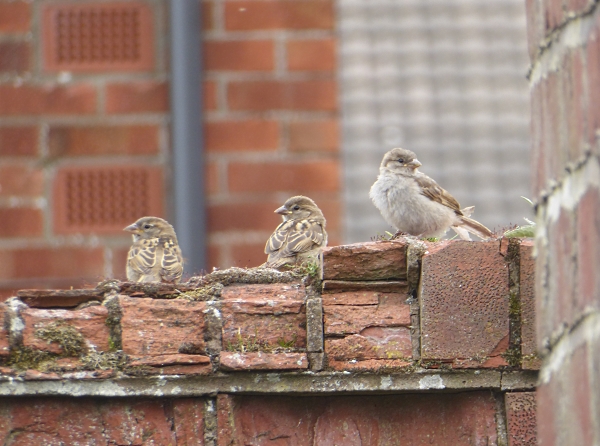
Public transport details: Train from Central at 10.08, arriving Southport at 10.54. Then the 44 bus from Hoghton Street (opposite the Little Theatre) at 11.25, arriving 11.35 at Elswick Road / Preesall Close. Returned on the 44 bus from Marshside Rd / Elswick Rd on the 44 at 2.25, getting back to the Little Theatre at 2.35, then the train back to Liverpool at 2.43.
